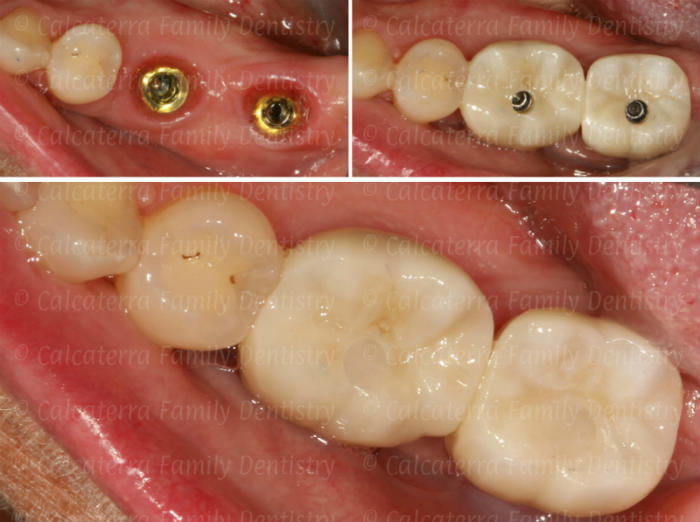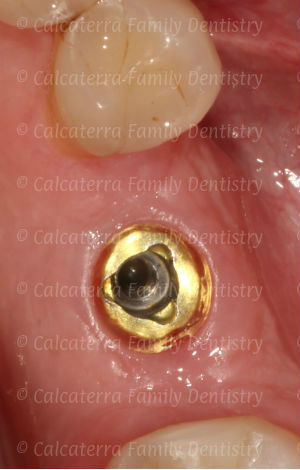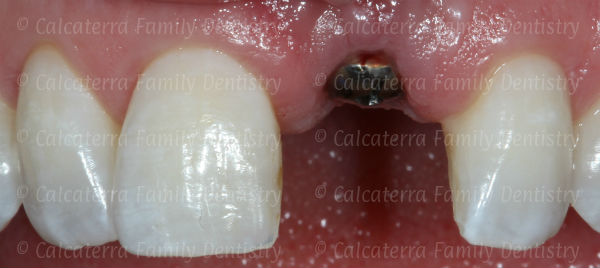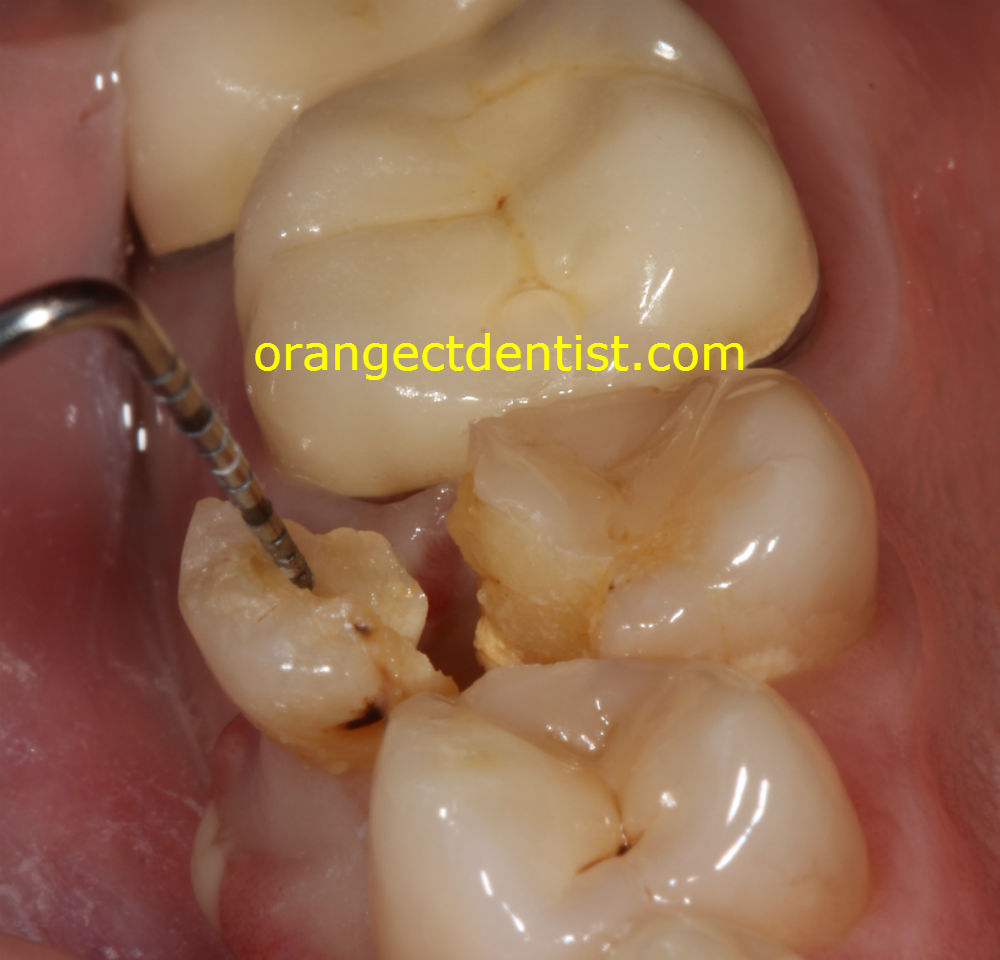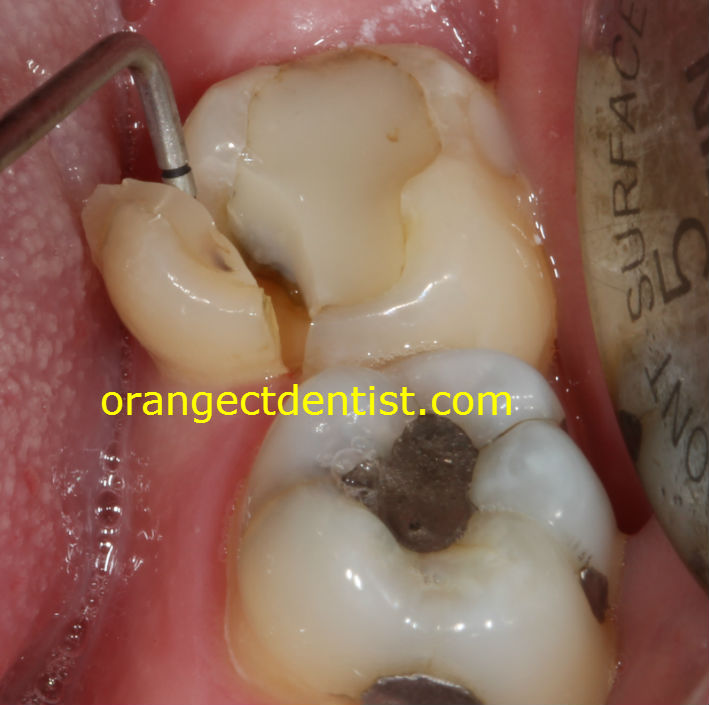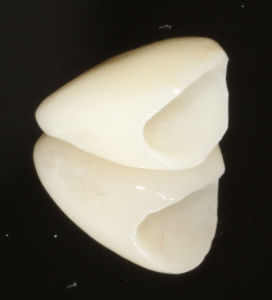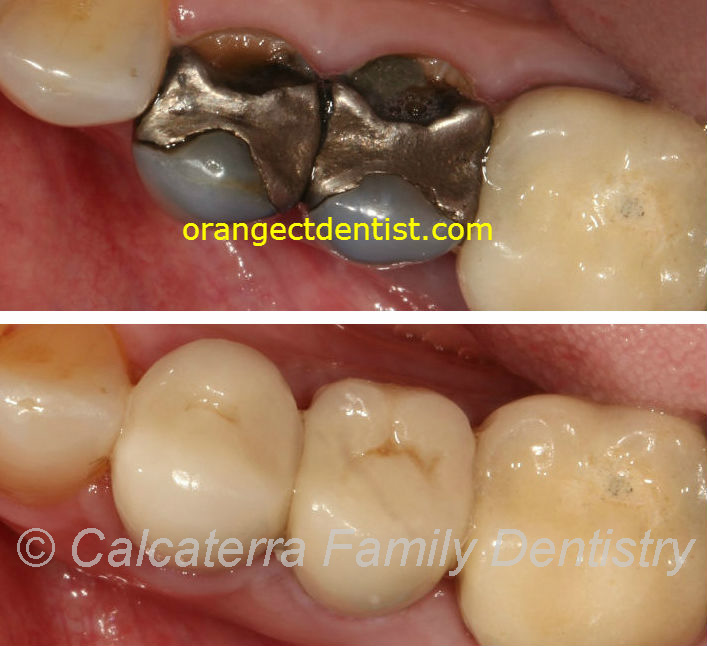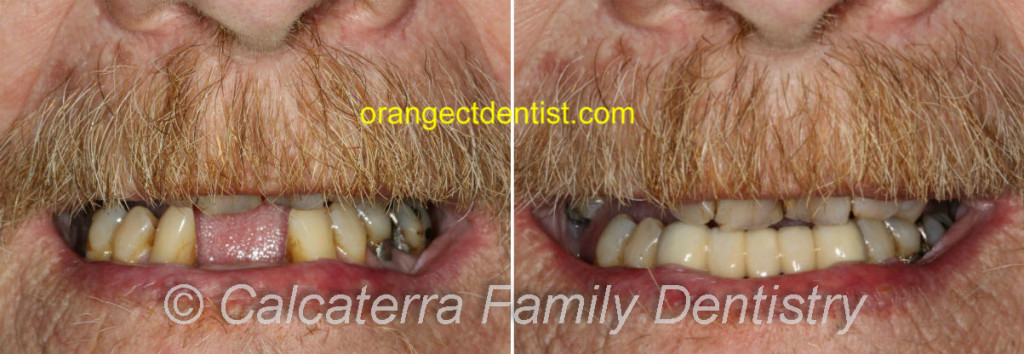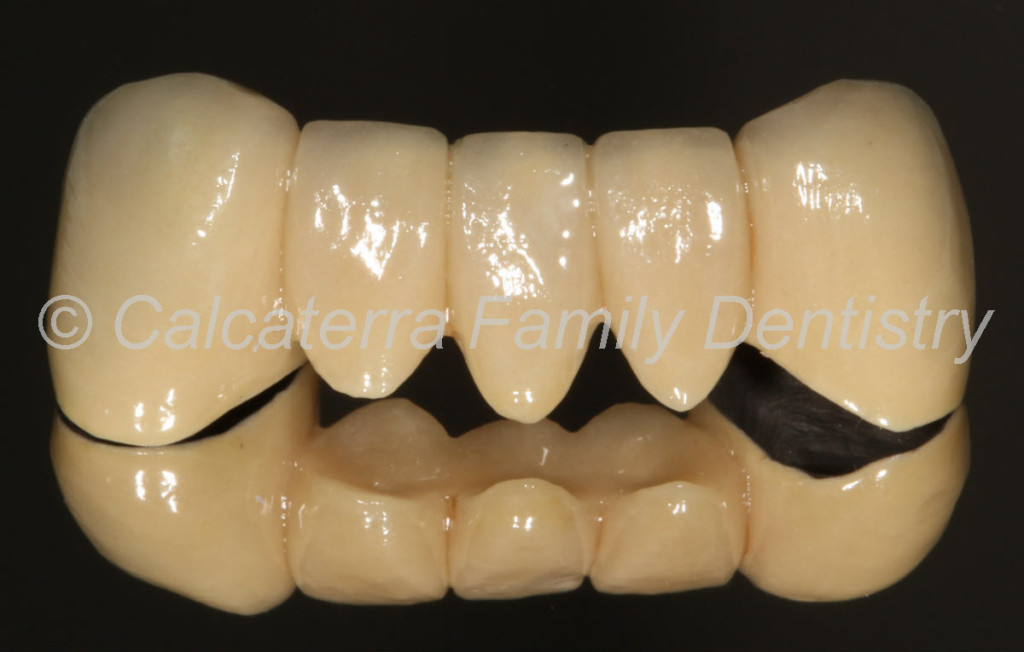One of the most frustrating things for a patient (and challenging for us as dentists) is dealing with the loss of a front tooth.
In many of those cases, our patients have to wear the “dreaded flipper“ for several months or more. No one likes a flipper – they can break easily, you can’t chew hard foods, they don’t look natural, and you can easily lose it.
Below is our patient Kim whom we helped to ditch her flipper:
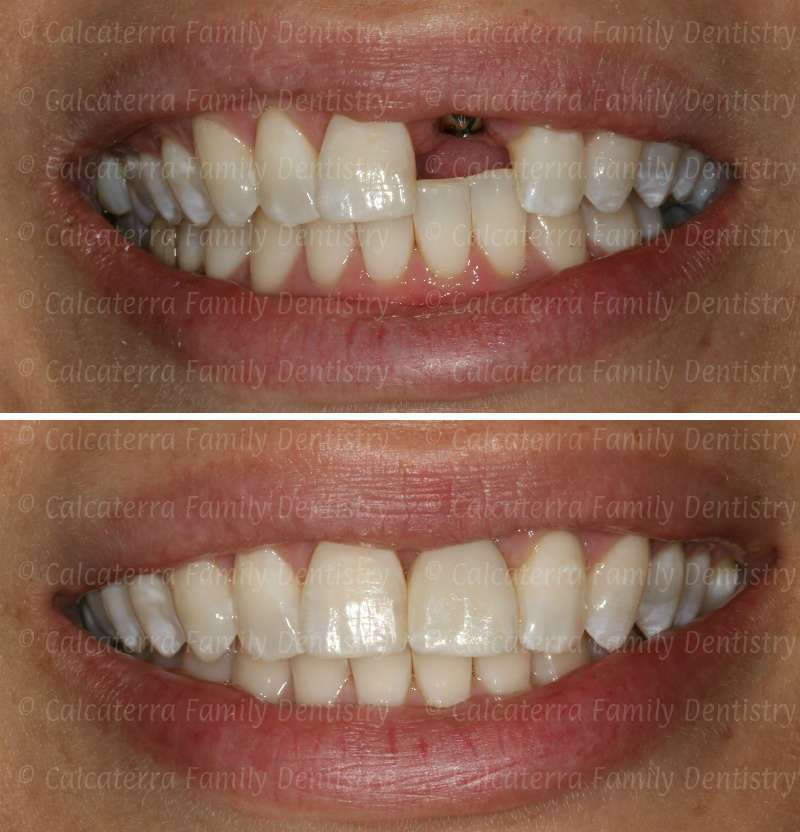
Due to a fractured tooth root and an infection, she lost her left front tooth. After months with a flipper, this is what we achieved! Photos and dentistry Dr. Nicholas Calcaterra.
Our patient had to wear her flipper for several months while waiting for the infection to resolve and for the dental implant to become stable. On more than one occasion, she misplaced it, and then had to walk around without a front tooth!
A Look at Kim’s Flipper
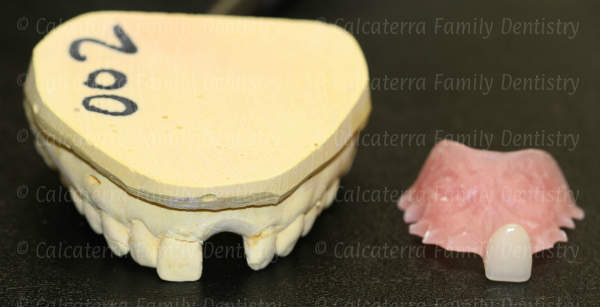
Kim’s flipper – along with the tooth model from which it was made.
This is Kim’s flipper. You can see it is a single tooth attached to denture acrylic. It is fragile and can break easily. She did NOT like wearing it.
Ditching the Flipper with Dental Implants
So how did we help Kim? As we mentioned before, we saved her smile with a dental implant. See these photos for a closeup:
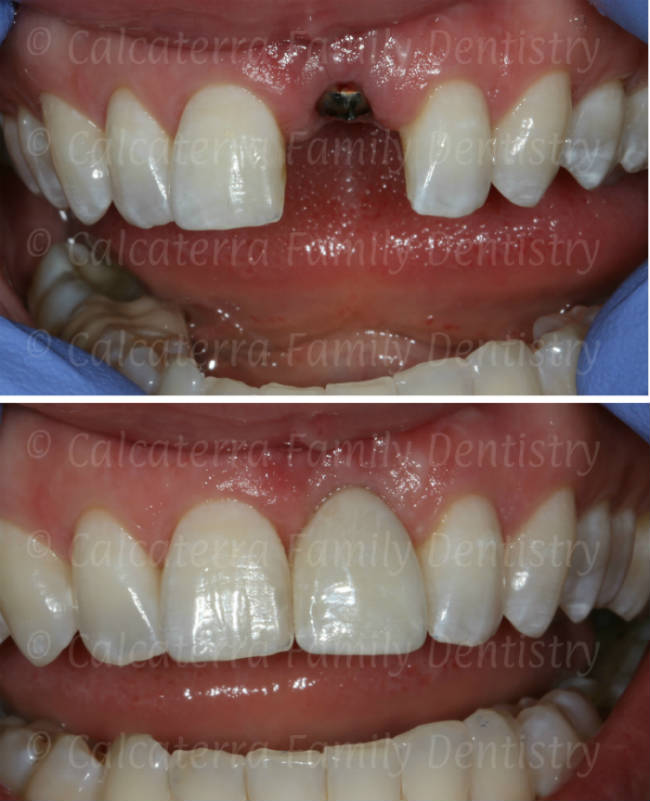
Restoring a missing a front tooth on Kim with a dental implant and crown. Photos and dentistry Dr. Nicholas Calcaterra.
As you can see above, we gave Kim her smile back using a dental implant. She is now able to talk, smile, and chew normally.
It took significant time and expertise to match the new crown to her existing smile. We think the results speak for themselves.
And what, you may ask, did Kim do with her flipper after she left our office with her new tooth? We don’t know… but the rumor on the street is that somehow a hammer was involved…
Are you missing a front tooth? Walking around with a flipper but hate it? Call us at (203) 799 -2929 or see this page if you want to come in to see how we can help.
